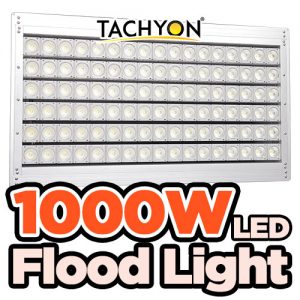Brief Introduction
With global warming, the development of low-carbon economy has become an international consensus, and it is also a new economic growth model for developed countries in the future.
A low-carbon economy is therefore expected to be high. It is not only an environmental protection means for the traditional industrial economy, but also is expected to become a new driving force for the global economy to get out of the “financial tsunami”. As the vanguard of the low-carbon economy is the rapidly developing energy-saving lighting industry, especially the green light source represented by LED semiconductor lighting is highly respected by governments around the world, and is known as the driver towards a low-carbon economy.
In the process of the rapid development of the LED lighting industry, in the case that its technology is not fully mature, the introduction of magnetic energy induction induction lamps in recent years has also shown a development trend that complements the application of LEDs.
So, what are the differences in technology and application of these two products? Is there any complementarity? Where are their respective advantages and disadvantages? This article analyzes the complementarity of LED and electrodeless lamps in technology and application.
Technical Differentiation Analysis of Induction Lights and LEDs
Electrodeless lamps and LEDs are both rookies of green light sources, and are respected by the world because of their high efficiency, energy saving, long life and other characteristics. Although there are many similarities in performance, there are essential differences in technology and application.
Lighting principle
From the analysis of the luminous principle, the electrodeless lamp is a gas discharge fluorescent lamp. It is a further technical improvement on the basis of traditional energy-saving fluorescent lamps, replacing electrode discharge with electromagnetic coupling. On the basis of inheriting the traditional mature technology, it makes the performance higher, and fully breaks the technical bottleneck that traditional energy-saving fluorescent lamps only stay in low-power light.
The product has been improved through technology, and its performance advantages are mainly reflected in high light efficiency, long life, high color rendering, low heat generation, no stroboscopic and so on.
The LED is a solid-state light emission technology, which was mainly used in the field of image display and signal indication before. It has been used in this field for more than 50 years. It entered people’s lives as general lighting in the 1990s, and the development and application time was relatively short.
Due to the high efficiency and energy saving of LED, the current government and scientific research institutions have invested a lot of money and manpower in research and development, and strive to apply this product technology in the field of general lighting. Looking at the current development of this technology, although the research and development progress is relatively fast (especially low-power LEDs), there are still many technical difficulties that are difficult to break through in the application of high-power lighting, and it is far from reaching the current expectations for it.
Luminous efficiency
Released from the latest data, the laboratory LED light efficiency can reach 180lm/w. Theoretically, it has great potential for development, and the market prospect is immeasurable. However, in the high-power research and development, the problems reflected in light color, heat dissipation, light decay, physical fitness, etc. are still an urgent problem to be solved.
These reasons have an inseparable relationship with the technological development foundation of LED. The difference between it and the induction lamp is that the induction lamp is a breakthrough and improvement in the traditional and mature technology. The LED is a technology developed in products such as image display and signal indication, and it lacks the mature technology foundation and application practice foundation like the electrodeless lamp. Therefore, it is still difficult for LED to solve the current problems.
But its technological breakthrough in low-power lighting is worthy of recognition. However, no matter in high power or low power, the problem of light color is still a big problem. From the analysis of the high-power white LED spectrogram, the blue light radiation with a wavelength of about 440nm is more prominent in the spectral radiation distribution. However, the blue light radiation of this wavelength has obvious chemical harm to the inner membrane of the human eye, and it fails to create a comfortable and healthy lighting environment for people.
Characteristics of the light source
Since Edison invented the incandescent lamp, artificial light sources have gone through a history of more than 100 years. But it is still short compared to the hundreds of millions of years of human evolutionary history. Humans’ own physiology cannot adapt to such a changeable optical radiation environment, especially the global attention caused by laser and semiconductor light sources.
When the characteristics of the lighting source and the characteristics of natural light are quite different from those of natural light, human physiology, psychology and health will have a certain impact. At present, LED products for daily use are mainly in the near-ultraviolet, visible and near-infrared bands. Therefore, the optical radiation hazards of LED products mainly consider the near-ultraviolet radiation damage to the eyes, the photochemical damage of retinal blue light and the thermal damage of radiation.
In contrast, the spectral radiation distribution wavelength of the electrodeless lamp is more prominent at 544nm. This wavelength belongs to the most sensitive wavelength band of the human eye to light radiation, which is more suitable for the human eye to be sensitive, and is a healthier green light source.
From the light color analysis of the two lighting technologies, the light color performance of the electrodeless light source is better than that of the LED in the field of general lighting. The disadvantage is that from the perspective of long-term development, although the luminous efficiency of electrodeless lamps can reach 90lm/w recently, the space for upward improvement is limited by luminescent materials and luminous principles, and there is no sign of breakthrough.
Complementary Application of Electrodeless Light and LED
Power Complementarity
From the above technical analysis, it can be seen that there is a strong complementarity between LED and electrodeless lamps in the field of general lighting applications. LED induction lamps are incomparable in low-power lighting and focal lighting, but in high-power general lighting, induction lamps are slightly better because of their low heat generation, no glare, no stroboscopic, and soft light. This has been reflected in marketing applications.
It can be seen from the analysis of the current electrodeless lamp technology and the application range of products in the industry that the electrodeless lamp between 80w and 300w is the most popular in the market, especially in the fields of industrial lighting and road lighting. Its energy-saving effect and high cost performance have been affirmed by the market.
Taking industrial lighting as an example, electrodeless lamps are efficient and energy-saving, and the price is within the acceptable range of customers. For this reason, it is welcomed by major lighting companies.
After the use of electrodeless lamp lighting, the workshop lighting saves 60% of the energy compared with the original metal halide lamp, and the perfect uniform lighting in the workshop makes the workshop brighter. Coupled with its non-stroboscopic feature, the fatigue of production workers is reduced, thereby improving work efficiency. In addition, the low temperature operation of the electrodeless lamp reduces the temperature of the entire space of the workshop, and the safety hazard caused by the heat is also reduced.
Complementarity of application areas
Combined with product characteristics, the successful application of electrodeless lamps in industrial lighting has led to a rapid increase in its marketing and promotion in this field.
The application of induction lamps on municipal roads has also opened up a situation. When the pole is 12 meters high, the vertical illuminance reaches 38Lux, and the average illuminance remains at 24Lux, which meets the requirements of the IEC Urban Road Lighting Design Standard.
In this project case, if high-power LED products with current technology are selected, if the same illuminance is to be achieved, a product with a rated power of 120W needs to be selected, and the energy-saving effect is comparable.
However, from the price analysis, the selection of LED products with excellent technology will cost 3 to 4 times higher than the price of electrodeless lamps. From this point of view, it is also a high-power product, and the electrodeless lamp is easily accepted by customers.
In low-power applications, electrodeless lamps cannot be compared with LEDs. This can be reflected from the limitations brought about by the principle and structure of electrodeless lamps. In addition, in terms of background lighting, decorative lighting, and low-power energy-saving effects, electrodeless lamps are also slightly inferior.
To sum up, in the field of general lighting in the future, the applications of LED and electrodeless lamps are complementary to each other, and they play an important role in different application fields.





